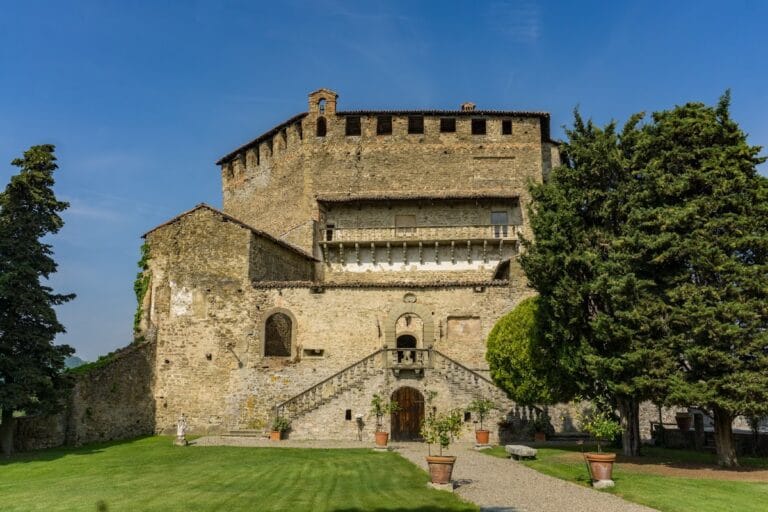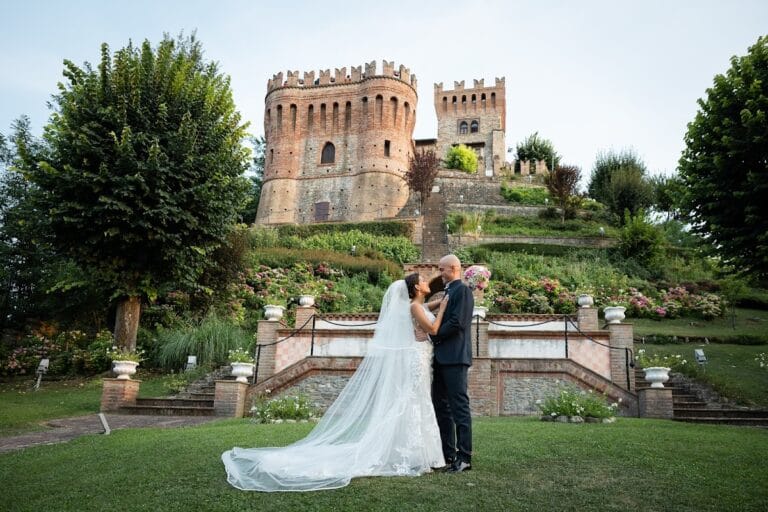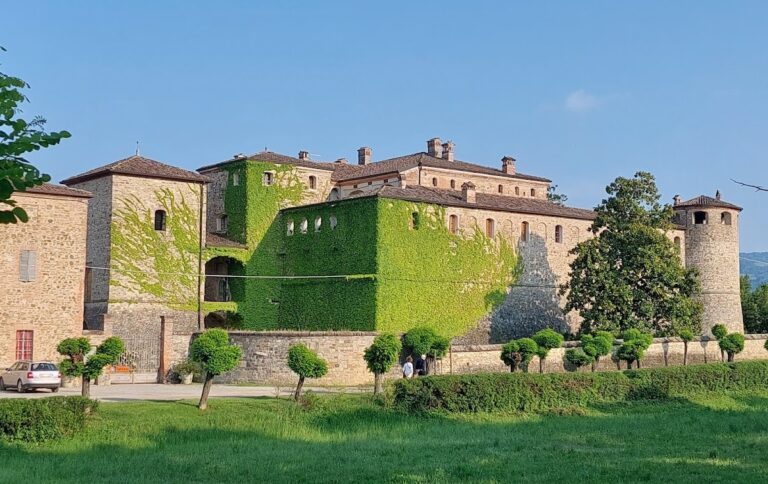Dal Verme Castle: A Medieval Fortress in Zavattarello, Italy
Visitor Information
Google Rating: 4.5
Popularity: Medium
Google Maps: View on Google Maps
Official Website: castellodalverme.com
Country: Italy
Civilization: Unclassified
Remains: Military
History
Dal Verme Castle is located in the municipality of Zavattarello, Italy. This stone fortress, built during the medieval period, occupies a strategic hilltop position overseeing the surrounding region.
The site’s earliest known affiliation dates back to the late 10th century when it was owned by the Abbey of San Colombano di Bobbio. Its possession was officially confirmed in 971 through a diploma issued by Emperor Otto I at the monastery of Sant’Ambrogio in Milan. By the latter half of the 12th century, in 1169, control shifted to the city of Piacenza, igniting disputes between two prominent local families: the Ghibelline Landi and the Guelf Scotti, both vying for the castle’s possession.
In 1264, the bishopric of Bobbio granted the castle as a fief to Ubertino Landi, a warlord who significantly strengthened its defenses and supported the growth of the village that developed around the fortress. His efforts aimed to render the castle virtually impregnable. Later, in 1327, Manfredo Landi ruled the castle under the authority of Ludwig the Bavarian, the Holy Roman Emperor of that era.
A major transition occurred in 1390 when the Bishop of Bobbio transferred ownership to Jacopo Dal Verme, a renowned mercenary leader (condottiero). This transfer was ratified by Pope Boniface IX, solidifying the Dal Verme family’s tenure over the castle and adjacent lands for nearly six centuries. Continuous family control lasted until 1975, when the estate was donated to the municipality of Zavattarello.
The castle’s fortified enclosure, known as a ricetto—an area used for shelter and defense—hosted one of the leading military schools in Europe, established by Jacopo Dal Verme. This institution evolved over time, eventually becoming the center of the Vermesco State, a regional territorial entity under Dal Verme authority.
During World War II, in 1944, the castle suffered severe damage from a fire. Restoration work commenced in 1987 under municipal management, allowing the structure to regain stability and accessibility. Since 2003, the top floor of Dal Verme Castle has housed the Giuseppe and Titina Dal Verme Museum of Contemporary Art, further linking its historic past with present cultural activities.
Remains
Dal Verme Castle presents a compact stone fortress design, situated atop a hill north of the village of Zavattarello. Its formidable walls reach nearly four meters in thickness, a robust feature that contributed to its defensive strength. The elevated location provides sweeping views embracing the Oltrepò Pavese, Val Tidone, and the Po Valley. From its terrace and tower, observers can spot neighboring castles such as Verde, Montalto Pavese, Torre degli Alberi near Ruino, Pietragavina, and Rocca de’ Giorgi, as well as the surrounding countryside, hills, and woodlands.
The fortress includes a fortified enclosure referred to as a ricetto. This section was historically vital for military defense and housed a renowned military school founded by Jacopo Dal Verme. Within the castle’s walls stand a chapel, stables, and approximately forty rooms arranged across multiple levels. These living and service spaces connect through a series of secondary internal staircases, creating a distinct and complex internal layout that underpinned its function as both residence and stronghold.
Key elements such as the main gate and drawbridge highlight the castle’s defensive architecture, designed to regulate access and protect its occupants. The stables reflect the importance of horses in maintaining the castle’s military readiness and daily operations. An icehouse, known locally as a ghiacciaia, also exists within the complex, serving as a storage facility for preserving food before refrigeration technology.
Historically, the defensive network surrounding the castle was further enhanced by additional watchtowers, though these structures no longer exist. The castle itself dominates the ancient village below, which once had its vegetation deliberately cleared to improve visibility and early warning against approaching enemies. Today, the surrounding greenery has been allowed to grow into a protected local park encompassing approximately 79 hectares, maintaining the natural landscape integral to the castle’s setting.
Together, these remains illustrate the castle’s multifaceted role through centuries as a military bastion, noble residence, and administrative center anchored in its rugged hilltop setting.










